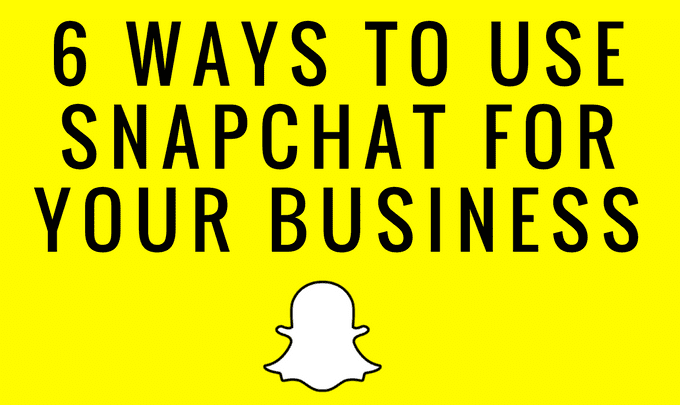7 tips to build a successful social media strategy for your brand

[bctt tweet=”Creating a social media strategy just got easier with these tips from @Wildfusion” username=”SheLeadsAfrica”] We’ve put seven tips to help you put together a winning social media plan of action for your business. Just the way an architect always has a well-drawn out plan for a house before it is built, putting together a “strategy” before getting on social media should be top on the list for any brand/business. Start with a good strategy Every brand or individual who decides to use the social media platform as a tool for either personal branding or brand management must have a “good strategy” on how they intend to play in that space. The first step is to think through what you intend to achieve and how you intend to go about it. Clear and engaging content Having clear and engaging content will provide brand awareness & daily consumer interaction with your brand. Find content that resonates with your target group. For instance; if your target group is young people, research and discover what most young people are doing online. Then craft your strategy to provide content they would be interested in whether it is music, football, videos, games, etc. Two-way communication Social media is a two-way communication. If your audience/consumers take out time to visit your social media page and interact with your content either by commenting, liking or sharing, please respond to them. No matter how flimsy or irrelevant their suggestions may be, the least you can say is “Thank you for your comment”. You would be amazed how much trust you would gain from your audience. Ask for feedback Always ask your audience/consumers for feedback on your products. This would help the brand position itself in the right direction. Social media gives you the opportunity to reach as many people as possible, through one medium, all at the same time! Find your tone of voice If your brand has a “serious tone of voice” offline and you decide to get on social media, find a “social media tone of voice” to increase your online presence & engagement. Use high-quality images On social media, sometimes images speak louder than words! Use images that are sharp, clear and attractive to the user. Your brand logo must always accompany your images as well. Images would serve as an advertising vehicle for your brand. Always be sincere No matter what you do, be sincere. Sincerity equals believable and credibility for your brand.she
Discover six ways to use Snapchat for business

[bctt tweet=”Ready to start using Snapchat for your business? These six tips will help you” username=”SheLeadsAfrica”] Have you thought of adding Snapchat to your marketing mix? Well if you haven’t, you should. A breakdown of Snapchat’s numbers will show you why: over 100 million daily active users, 400 million snaps per day, and over 1 billion views of stories each day. And there’s more. For the personal user, Snapchat lets you easily talk with friends, view Live Stories from around the world, and explore news with the Discover feature. It also presents huge possibilities for your business. One of the key ways for brands to connect viscerally with their customers is to share brand stories. Shared value has been known to create brand loyalty and with Snapchat being real-time, it provides a ready platform to showcase the values and cultures of your company in a personal and visual way. Find out six ways you can use Snapchat for your business in the infographic below (text follows after). 1. Cover live events You can use Snapchat for product launches or one-of-kind events like the 5,000th customer to shop in your store etc 2. Offer contests or promotions You can offer promo codes or discounts to the fans who watch your entire Snapchat story, or ask them to take a snap while holding your product. 3. Behind the scenes You could show off your company and make sure to have fun with it. Capture birthday parties, Friday afternoons or company outings. The idea is to show how your brand differentiates itself with company culture. 4. Partner with influencers Just like with Twitter and Instagram, social media influencers on Snapchat can help spread brand awareness and reach. Allow these influencers “take over” your brand’s Snap for maybe a day to help with the promotion of an upcoming event, product launch etc. These influencers will help introduce & bring their own followers to your page. 5. Publish transparency series Like we mentioned earlier, shared values help build brand loyalty. One of the best ways to do so is present a backstage company access to your customers. You’d be surprised how many people are interested in your internal processes. Cisco has done a neat job of sharing the daily goings-on in the firm with their “A day in the life of an Account Manager” series. If you are wondering what Cisco – a networking and telecommunications company is doing Snapchat – you are not alone. Telecommunications isn’t the most interesting subject to talk about, but Cisco managed to flip the script. They focused on their culture and exposed a human side of their brand. 6. Host AMA sessions Ask Me Anything sessions can be anything you want them to be. They can be about your goofy company culture or a professional conversation about trends in your industry. It could be “We just bought a N1 million camera for our production team, ask us anything” or something a little more serious like “We got 2 billion organic impressions on a campaign last week, ask us anything.” or something random, “We can tint my eyebrows with Coffee, ask us anything.” Find relevant topics you can start with your audience that will pull them in and engage them.
Top-level website changes that will turbocharge your business SEO

[bctt tweet=”Every business needs an SEO strategy, why not share with changing how your website looks” via=”no”] Every business that will grow beyond the street corner needs an SEO strategy; a way for it to get found online. Why? Because online is where 67% of Nigerian buyers start their purchase journey [PDF]. So, your SEO and profitability are not only equally important, they also go hand in hand. What is SEO again? Why do you need it? If you can’t answer these questions, eead Uche Offokoja’s SEO primer; “Is your business ready for SEO?” to get a quick refresher. __ It’s impossible to cover the nuances of SEO in a 1000-word article. If we are being honest, 10,000 words, and we’d only be halfway there. What you’ll read in this article are fundamental aspects of your website you can improve to start ranking on Google, getting seen by your consumers and making more sales. Start with a website audit The first step to creating an SEO strategy is your website audit. Doing this lets you know the specific elements of your website to improve. A professional SEO service will provide a more in-depth outlook for your website complete with SEO competitive analysis, wireframe recommendations plus a search audit. But a great way to do this on a shoestring budget is to use the SEMRush tool. It’s a free tool that will give you an interactive snapshot of your current SEO efforts; your top organic keywords and their positions, what other sites are competing for your position, backlinks and more. A basic audit of one of my favourite websites; Copyblogger.com, returned this: (All traffic to copyblogger is organic and the leading keyword is “how to write an article.” The data points are interactive and you can dig further down to extract more insights). These insights are useful for your content strategy (more on this later) and possible website upgrades to improve usability. Optimize your site for mobile As an extension of your website audit, examine how you are doing on mobile. Google ranks mobile-optimized websites higher in SERPs (search engine results pages). But more important is the implication of this on your visitors. More than 55% of all searches now come from mobile, and if your consumers can’t use your site on mobile, they won’t stick around. To get a good sense of how your website does on mobile, use Varvy. (Copyblogger.com is optimized for mobile, although the site latency on mobile needs to be optimized.) The relationship between brands and customers is not an equal one. Customers have the leverage and you have to be there for them as they navigate their social and transactional realities. To do that is to be available on their mobile phones where they spend a third of their waking lives. I’ll leave Tom Fisbourne of Marketoon to drive the point home; “A well-loved brand that isn’t optimized for mobile may not be well-loved for long.” Speak to your developer about responsive website design to improve your mobile-optimization. Tweet: When last did you do a website audit? Never? Find out why you need one here Develop a content strategy The number of visitors to your page and how long they stay (their dwell time) also affect your ranking. Useful content with high production values is one of the most effective ways to attract and keep traffic on your website. A content strategy doesn’t mean you start a podcast, a webinar and an email autoresponder series at the same time. Start with blogging… Companies with blogs have 97% more inbound links (Source) B2B marketers using blogs generate 67% more leads (Source) Small business with blogs generate 126% more leads (Source) Start your content strategy with keyword research. This helps you figure out real questions and ideas that matter to your consumers. The Google Keyword Planner or the SEMRush tool will come in handy here. Some general ideas for your content strategy: – Develop content for humans and make your content helpful. – Your content strategy should include your content matrix, content calendar and an operational calendar. – Annotate your content with header tags, add outbound links, make your content readable (avoid walls of text), use alt texts for your images, and compress image sizes to reduce latency. – Finally, distribute your content. Suss out a robust distribution strategy that will ensure your content reaches your desired audience. You could, for instance, start sending weekly email to your list or create a social sharing strategy. Are you using popups? Pop-ups: online forms that keep you away from your heart’s desires. Only a few people are a fan. That’s why Google is cracking down on websites that have pop-ups. Such websites rank lower in search engine results pages. Speak with your developer to remove any pop-ups on your website and explore alternative lead-generation elements, including stationary banner ads, stationary sidebar ads, behavior-driven pop-ups or notification style ads. The idea is not to get rid of lead-generation, but to present decent usability. Improve your site architecture Finally, how easy is it to navigate your website? When visitors can’t find what they want on your website, they often leave right away; leading to high bounce rate, leading to low ranking on Google. As a general rule; your website should not take more than four clicks to get to the deepest level. LIke this: The fact is; site architecture is not only great for usability, it makes it easier for search engine bots to crawl and index your website. While SEO is not the goal in itself (sales and profitability are), you’ll often need SEO to get you there. The ideas here will get you right on your way. — This article was written by Gbenga Onalaja. Gbenga is a Content Strategist at Wild Fusion, Wild Fusion is Africa’s leading Digital Marketing Agency.
